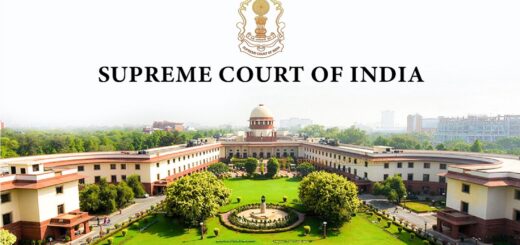Preamble of Indian Constitution
The Preamble functions as the introductory section of the Constitution. It was revised by the 42nd Constitutional Amendment Act in 1976, which aimed to establish India as a Sovereign, Socialist, Secular, and Democratic republic. It guarantees justice, liberty, and equality for all citizens of India while fostering a sense of fraternity among the populace.
Synopsis:
- The Preamble states
- Source of the Constitution
- Nature of Indian state
- Objectives of Indian State
- Date of its adoption
- Case laws
1. The Preamble states
“WE, THE PEOPLE OF INDIA, having solemnly resolved to constitute India into a SOVEREIGN SOCIALIST SECULAR DEMOCRATIC REPUBLIC and to secure to all its citizens:
JUSTICE, social, economic and political;
LIBERTY of thought, expression, belief, faith and worship;
EQUALITY of status and of opportunity;
and to promote among them all
FRATERNITY assuring the dignity of the individual and the unity and integrity of the Nation;
IN OUR CONSTITUENT ASSEMBLY this twenty-sixth day of November, 1949, do HEREBY ADOPT, ENACT AND GIVE TO OURSELVES THIS CONSTITUTION.”
2. Source of the Constitution
The expression “We the people of India” underscores that the constitution is created by the Indian populace and serves their interests, rather than being imposed upon them by an external authority. Additionally, it highlights the principle of popular sovereignty as articulated by Rousseau, asserting that all authority originates from the people, thereby ensuring that the political system remains answerable and accountable to them.
3. Nature of Indian state
Sovereign: India possesses both internal and external sovereignty, meaning it is free from foreign domination and has a government that is elected directly by its citizens, which enacts laws governing the populace. No external entity has the authority to influence the governance of India.
Socialist: The term “socialism” refers to an economic system in which the state owns the means of production and distribution. India has embraced a Mixed Economy model, which incorporates both state-owned and private enterprises. As a social philosophy, socialism emphasizes the importance of achieving societal equality.
Secular: The principles of secularism outlined in the Preamble indicate that the state does not endorse any particular religion, ensuring that all individuals have equal rights to freedom of conscience and the ability to profess, practice, and promote their chosen religion. (S R Bommai and Others v Union of India, AIR 1994 SC 1918)
Democratic: This term signifies that the Constitution has instituted a government that derives its authority from the consent of the governed. Leaders are chosen through elections and are accountable to the electorate.
Republic: In contrast to a monarchy, where the head of state is appointed based on hereditary succession for life or until abdication, a democratic republic features an elected head of state serving for a predetermined term. The President of India is selected by an electoral college for a five-year term, and this position is not inherited. Any citizen of India has the right to run for the presidency.
4. Objectives of Indian State
Justice encompasses social, economic, and political dimensions.
Equality pertains to both status and opportunity.
Liberty involves the freedom of thought, expression, belief, faith, and worship.
Fraternity, or brotherhood, ensures the dignity of the individual while promoting the unity and integrity of the nation.
5. Date of its adoption
The Constitution was adopted on November 26, 1949. However, the majority of its articles became effective on January 26, 1950. Article 394 specifies that it, along with Articles 5, 6, 7, 8, 9, 60, 324, 366, 367, 379, 380, 388, 391, 392, and 393, took effect immediately. The remaining provisions of the Constitution were enacted on January 26, 1950, which is designated as the commencement date of the Constitution.
6. Case Laws
Re Berubari Union Case
The subject was examined by a nine-judge panel of the Supreme Court of India in the Re Berubari Union Case (1960). The ruling, delivered by the esteemed Justice Gajendra Gadkar, indicated that the preamble does not constitute a part of the Constitution. Nevertheless, it serves as a valuable reflection of the intentions and aspirations of the Constitution’s framers.
Kesavananda Bharati v. State of Kerala
Subsequently, the issue was escalated to a thirteen-judge constitutional bench of the Supreme Court in the case of Kesavananda Bharti v. State of Kerala (1973). The Court determined that the Preamble is indeed an integral part of the Constitution. While it does not impose any legally binding obligations or limitations, it plays a significant role in the interpretation of laws and the provisions of the Constitution. The phrase “amendment of this Constitution” in Article 368 implies that any addition or alteration to any provision of the Constitution must align with the overarching principles outlined in the preamble to fulfill the Constitution’s fundamental objectives.



